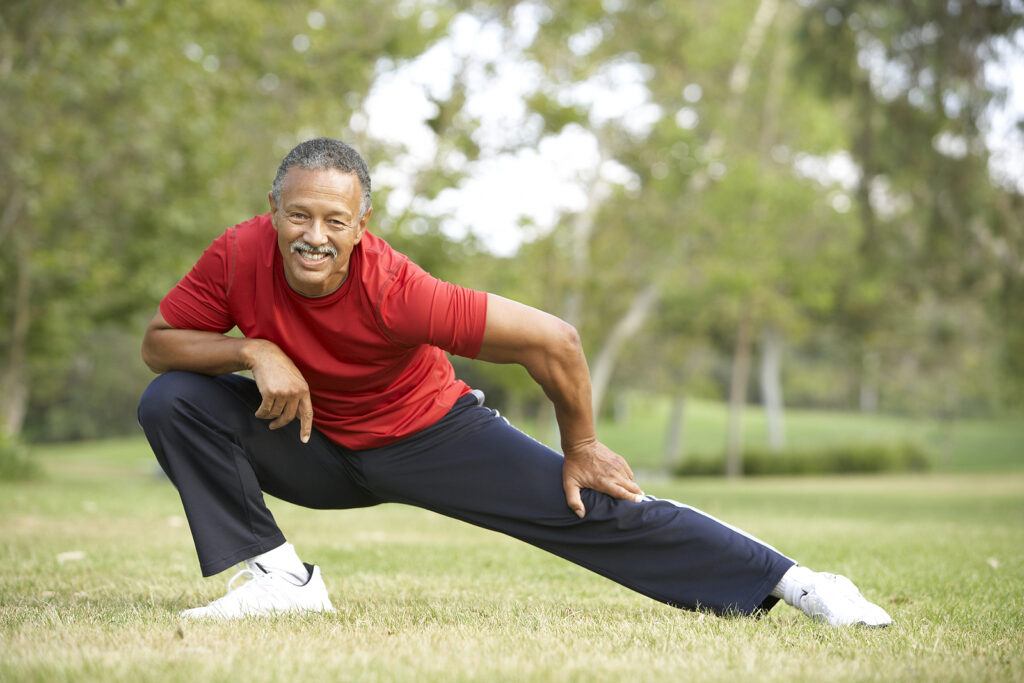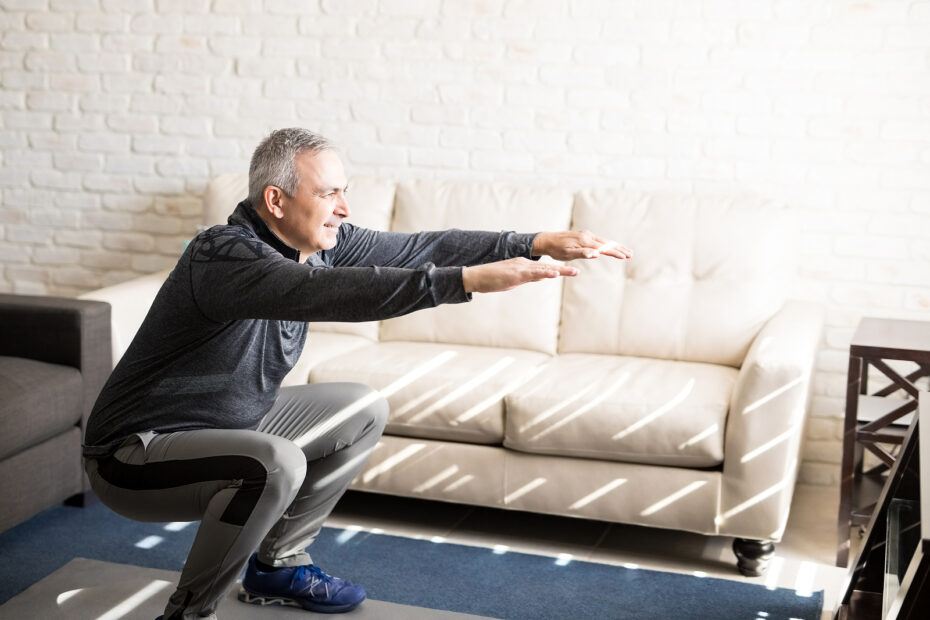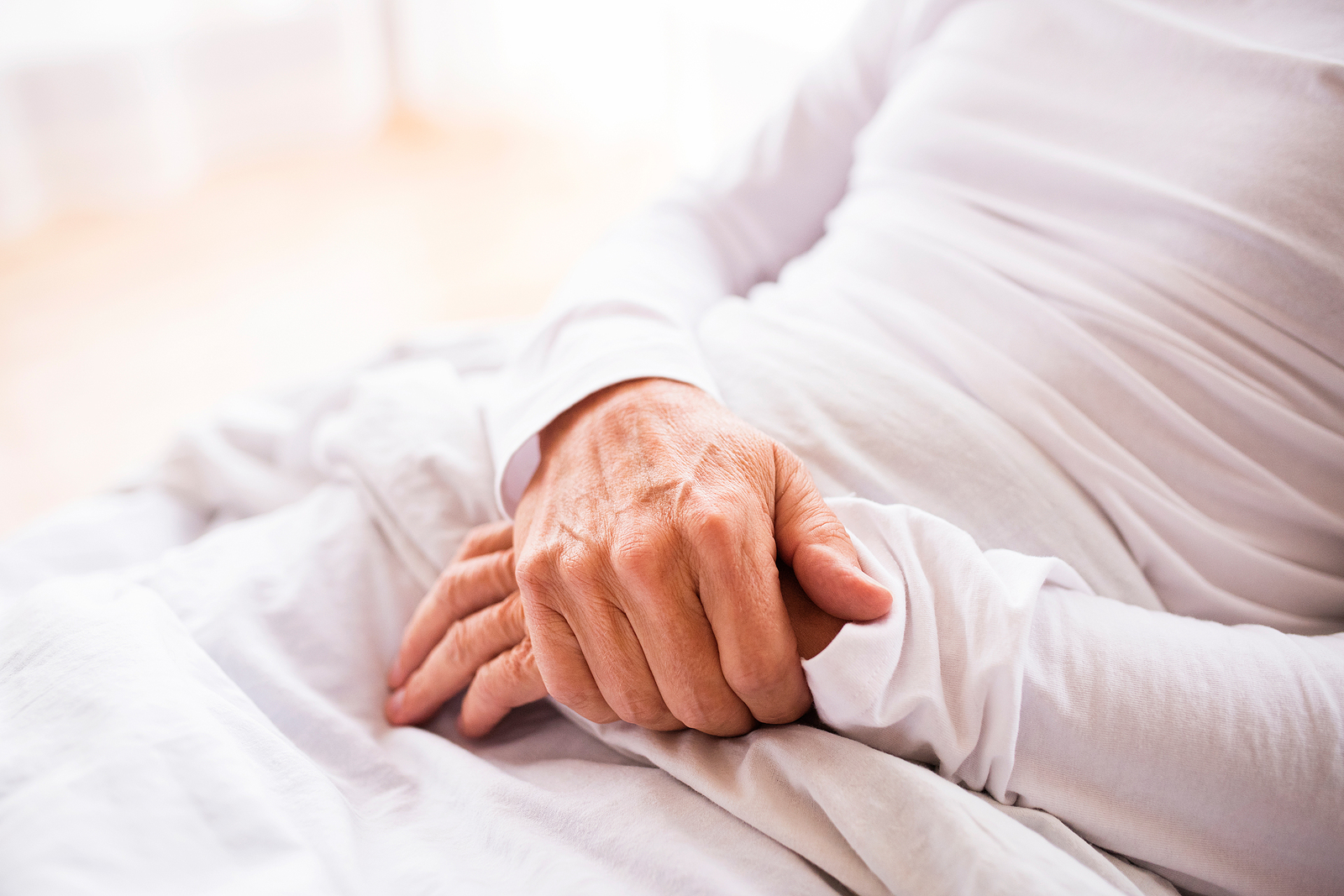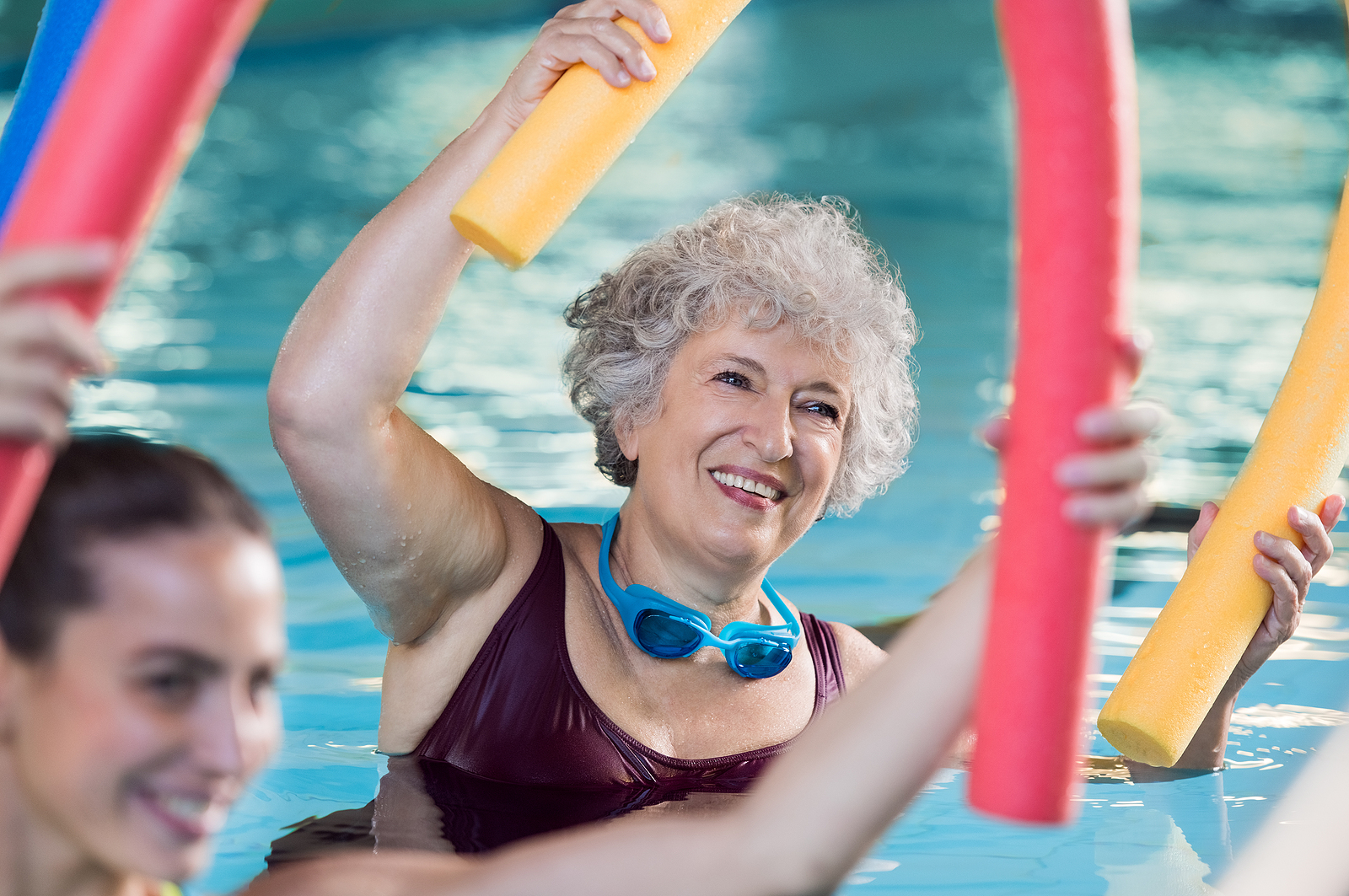Maintaining and/or improving leg strength is one of the most important things seniors can do when it comes to maximizing independence.
Simply put, every thing is easier when we’re stronger.
From getting out of a chair to stepping off a curb safely, the benefits that come with improved strength are numerous.
And yes, it’s true that we tend to lose muscle mass and strength naturally as we age, but we can combat this with regular exercise.
And fortunately, most of the best leg strengthening exercises don’t require any fancy equipment (so not having a gym membership isn’t a valid excuse).
In this guide, we’ll go over some of the top, senior-friendly leg exercises that can be done right in the comfort of home.
We’ll also provide some additional tips to help you get the most out of your workouts, while protecting your joints.
After reading, you’ll be ready to get those legs working.
Benefits of Having Stronger Legs
The perks that come with improved strength are numerous, but here are a few of the top considerations:
1. Improved Mobility and Independence
Strong legs make it easier to walk, stand, climb stairs, and perform daily tasks like getting in and out of chairs or cars.
In other words, having stronger legs makes just about everything easier.
And enhanced mobility means greater independence, allowing seniors to move freely without relying on as much assistance.
2. Better Balance and Fall Prevention
Strengthening your leg muscles can also help improve overall balance and stability, significantly reducing the risk of falls.
And since 1 in 4 seniors fall each year (according to the CDC), anything we can do to reduce fall risk is a good thing.
Falls are a common cause of injury for seniors, and strong legs can prevent them by enhancing body control.
And, if worst comes to worst and you do have a fall, having stronger legs will make it easier to get up on your own.
3. Enhanced Joint Support and Pain Relief
Strong leg muscles, particularly around the knees and hips, provide better joint support.
This can reduce stress on the joints, alleviate pain from conditions like arthritis, and lower the risk of injury.
Now improving leg strength can’t cure or reverse the joint damage from arthritis, but it can help reduce the pain and disfunction that comes with it.
Again, being stronger helps everything.
4. Muscle Mass and Bone Density
As we age, muscle mass and bone density naturally decline – it’s just a fact of life.
Leg-strengthening exercises however, especially weight bearing exercises, can help counteract these changes.
Progressive resistance training can help slow down and reverse muscle mass loss and help improve bone density, reducing the effects of osteoporosis.
And improving bone density can help reduce the chances of fractures, which is something we should all strive for.
5. Increased Energy and Endurance
Having stronger legs contributes to overall fitness, leading to increased energy levels and better endurance for physical activities.
This boost makes it easier to engage in hobbies, social events, and outdoor adventures.
In other words, it helps improve overall quality of life.
6. Enhanced Mental Health and Confidence
Improving leg strength can also boost mental well-being.
Increased mobility and the ability to perform tasks independently can help build confidence and reduce anxiety, leading to a better quality of life.
Regular exercise has been shown to reduce symptoms of depression and enhance mood as well.
The 6 Best Leg Strengthening Exercises for Seniors
1. Sit-Stand Transfers
I love this exercise because it’s safe and functional – and it’s also something we all have to do everyday anyway.
And when leg weakness starts kicking in, it’s also one of the first things we notice getting harder.
This exercise also targets most of the large muscles in your leg, so you get a lot of benefit from the effort you put into doing this one.
How to do it:
- Sit in a comfortable, supportive chair with your feet shoulder-width apart.
- Scoot bottom to the edge of chair.
- Lean forward, push through your legs, and stand up.
- Get your balance and then slowly sit back down.
- Repeat for sets of 5-10.
If you have to use your hands to push off, that’s ok, but as you get stronger, try to stand without using your arms at all.
Helpful tip: you can make this exercise easier or harder by changing your seat; sitting in a lower, softer seat makes this exercise harder (and a higher, firmer seat makes it easier).
2. Front Step Ups
This is another great exercise for targeting the quads and glutes, muscles that are important for standing, walking, and going up/down stairs.
How to do it:
- Stand in front of a stair case and grab onto one or two rails for stability.
- Step up on the first step, leading with your right leg, and bring your left foot completely on the first step.
- Step back down (backwards), leading with your left foot, and bring your right foot completely down to the floor.
- Repeat, alternating which foot you lead with on the way up.
- Repeat for sets of 5-10 for each leg.
Helpful tip: you can make this exercise more challenging by increase reps or taking a hand (or both) off the hand rails.
3. Side Leg Raises (Hip Abduction)
This exercise targets the muscles on the side of your hips (the abductors), which are important for stabilizing your pelvis while you walk.
This exercise can be done in front of a walker, dresser, or any other stable surface, but the kitchen counter offers a great place to hold on to.
How to do it:
- Stand in front of your kitchen counter/sink, holding on with both hands.
- While keeping your right leg straight, bring it out to the side, hold for a second, and then slowly return to the floor.
- Complete 10 – 15 reps and then repeat on the other leg.
Make sure your toes point straight ahead the entire time and try to maintain good upright posture throughout.
Helpful tip: you can make this exercise more challenging by increasing reps and/or sets, adding an ankle weight/resistance band, or removing hands from the counter.
4. Marching in Place (Standing)
This exercise is great for improving hip flexor strength, but it also does a nice job of elevating your heart rate and getting your lungs working (making it a great cardiovascular exercise too).
How to do it:
- Stand in front of your kitchen counter/sink, holding on with both hands.
- While maintaining good posture, bring one knee up toward the counter, hold for a sec, and then return to floor.
- Repeat on the opposite leg, alternating sides as you go.
- Repeat for 10 -15 reps for each leg.
Helpful tip: you can make this exercise harder by progressing from both hands on the counter, to one, to none.
5. Backward Lunge
I hate lunges, but they such a great exercise I still try to include them in my personal workouts.
Seniors with knee problems will have to be careful with this one, but as long as it doesn’t hurt, it’s a great way to strengthen just about every muscle in your leg.
How to do it:
- Stand beside your kitchen counter, feet shoulder width apart.
- Take a big step backwards with your right leg, bending your left knee as far down as comfortable.
- Pause in this lunge position for a second, before pushing through your left leg as you return to a standing position.
- Switch legs and repeat.
- Repeat for 10 – 15 reps on each leg, alternating sides as you go.
Lunges are challenging, but they’re great for building leg strength.
Helpful tip: if you have balance concerns, feel free to hold onto the counter with one hand as you lunge back. If you have knee issues, you can decrease how far down you lunge to reduce strain through your knees.
6. Lateral Stepping
This is another great exercise for improving hip abduction strength, but it can also work your balance a little at the same time.
How to do it:
- Stand in front of your kitchen counter, toes facing straight ahead.
- Bend both knees slightly and take a big step to the right.
- Continue stepping to the right until you run out of counter and then repeat to the left side.
- Repeat for 5 laps in each direction (or more if you have a smaller kitchen).
Helpful tip: you can make this exercise more challenging by placing a tied resistance band around your knees or ankles.

How Often Should Seniors Do Leg Strengthening Exercises?
For the best results, most seniors will want to aim for leg-strengthening exercises 2-3 times per week, but some may want to progress to 4-5x per week with time.
Consistency is key, but it’s essential to allow muscles to rest between workouts.
Always consult with a healthcare provider before starting any exercise routine you aren’t sure about.
How to Progress the Intensity of Leg-Strengthening Exercises
As strength and confidence improve, it’s essential to gradually increase exercise intensity for continued progress.
Here’s how to safely step up the challenge:
1. Increase Repetitions and/or Sets
Start by adding a few more repetitions to each exercise.
Once you’re comfortable with a set, gradually increase to 2-3 sets per exercise. This will boost endurance and muscle strength.
2. Add Resistance
Incorporate light weights, resistance bands, or ankle weights to make exercises more challenging.
Start with minimal resistance and increase gradually as strength improves.
Once you’re able to perform all reps of a given set without challenge, it’s time to start adding additional resistance.
For example, if I was aiming for 3 sets of 10 reps for standing hip abductions and I was able to do all 3 sets without taking a break, I could progress by adding an ankle weight or using a resistance band.
3. Slow Down Movements
You can also make a lot of these exercises harder by slowing down and/or encorporating holds.
Perform exercises slowly and with control to engage muscles more deeply.
And pausing at the hardest part of the movement can enhance muscle engagement and improve stability as well.
4. Try Advanced Variations
Once you master a given exercise, you can always try to modify it to make it more challenging.
For example, progress from seated leg lifts to standing ones or from chair squats to full squats.
Always ensure your form is correct before progressing though and never push past your comfort zone.
5. Increase Exercise Frequency
If your current routine feels easy, add another session to your weekly schedule.
Gradually progressing from 2-3 times a week to 4-5 times can build muscle without overexerting.
6. Incorporate Balance Challenges
Adding balance elements like standing on one leg or using an unstable surface (e.g., a foam pad) can engage additional muscle groups and improve stability.
Always use a chair or wall for support when starting and you may want to have a spotter around as well.
Progress slowly to avoid overloading your body and increasing the risk of injury.
Additional Safety Tips for Seniors
Before starting any exercise routine, it’s essential to follow these safety tips:
- Warm-Up: Always start with a 5-10 minute warm-up to increase blood flow to the muscles.
- Use Support: For balance exercises, use a chair or wall for extra stability.
- Listen to Your Body: If an exercise causes pain, stop and consult a healthcare professional.
- Stay Hydrated: Drink plenty of water before, during, and after your workout.
- Proper Footwear: Wear sturdy, non-slip shoes to prevent falls.
Contraindications for Seniors Engaging in Leg-Strengthening Exercises
While strengthening exercises can benefit most seniors, certain conditions or situations require caution.
It’s essential to consult with a healthcare provider before beginning a new exercise program, especially if you experience any of the following:
1. Severe Osteoporosis
Advanced osteoporosis can make some leg-strengthening exercises risky due to fragile bones.
High-impact or weight-bearing movements could lead to fractures, so low-impact options may be preferable.
2. Joint or Muscle Pain
If you have acute or chronic joint pain, such as severe arthritis, some exercises might exacerbate symptoms.
Avoid exercises that cause pain, and consider modifications or alternatives that reduce joint stress.
Leg strengthening exercises can be beneficial for improving pain, but only if the exercises are done in a pain-free manner.
3. Uncontrolled High Blood Pressure or Heart Conditions
Strenuous exercise may elevate heart rate and blood pressure.
Seniors with cardiovascular conditions should focus on moderate, controlled exercises and monitor exertion levels closely.
When in doubt, check with your physician to make sure your exercise routine is safe.
4. Balance Issues or Dizziness
If you have a history of dizziness or balance problems, standing exercises may increase the risk of falls.
Fee free to use supportive aids like a chair or wall for safety or consider seated exercises if necessary.
It’s important to stay safe while exercising, but fortunately, most exercises can be modified to accommodate any needs.
5. Recent Surgery or Injury
Seniors recovering from surgery or injury may need to follow a tailored exercise plan or protocol.
Avoid leg exercises that strain healing tissues and follow a physical therapist’s guidance for a safe return to activity.
6. Uncontrolled Diabetes or Neuropathy
Nerve damage in the legs or feet, common in uncontrolled diabetes, may impact balance and feeling.
Take precautions when exercising and opt for movements that minimize fall risk and discomfort.
Always prioritize safety, listen to your body, and seek professional guidance when needed.
When to Consult a Professional
While these exercises are generally safe for most seniors, consulting a physical therapist or fitness professional can help ensure proper form and tailor exercises to individual needs.
They can also offer modifications if any exercises are too challenging (or causing pain).
Remember, we shouldn’t be experiencing any real pain while exercising.
Some muscle soreness after exercise is ok, especially if you’re performing a new move, but any soreness that lasts longer than 2-3 days probably means you over did it.
Again, when in doubt, consult your physician or seek out a physical therapy consult.
Final Thoughts
Ok, that about does it.
When it comes to choosing leg exercises, it’s always nice when we can work several muscle groups at once with single moves.
That’s why I like exercises like the sit-stand transfer (which is essentially a squat), front step ups, and lateral stepping.
These are also very functional movements, incorporating activities most of us do every day anyway.
Anyway, building and maintaining strong legs is one of the most beneficial things seniors can do for themselves.
Because when it comes to mobility and independence, being strong makes everything a little easier.
So stay strong, stay active, and enjoy the benefits of a healthier, more independent lifestyle!



